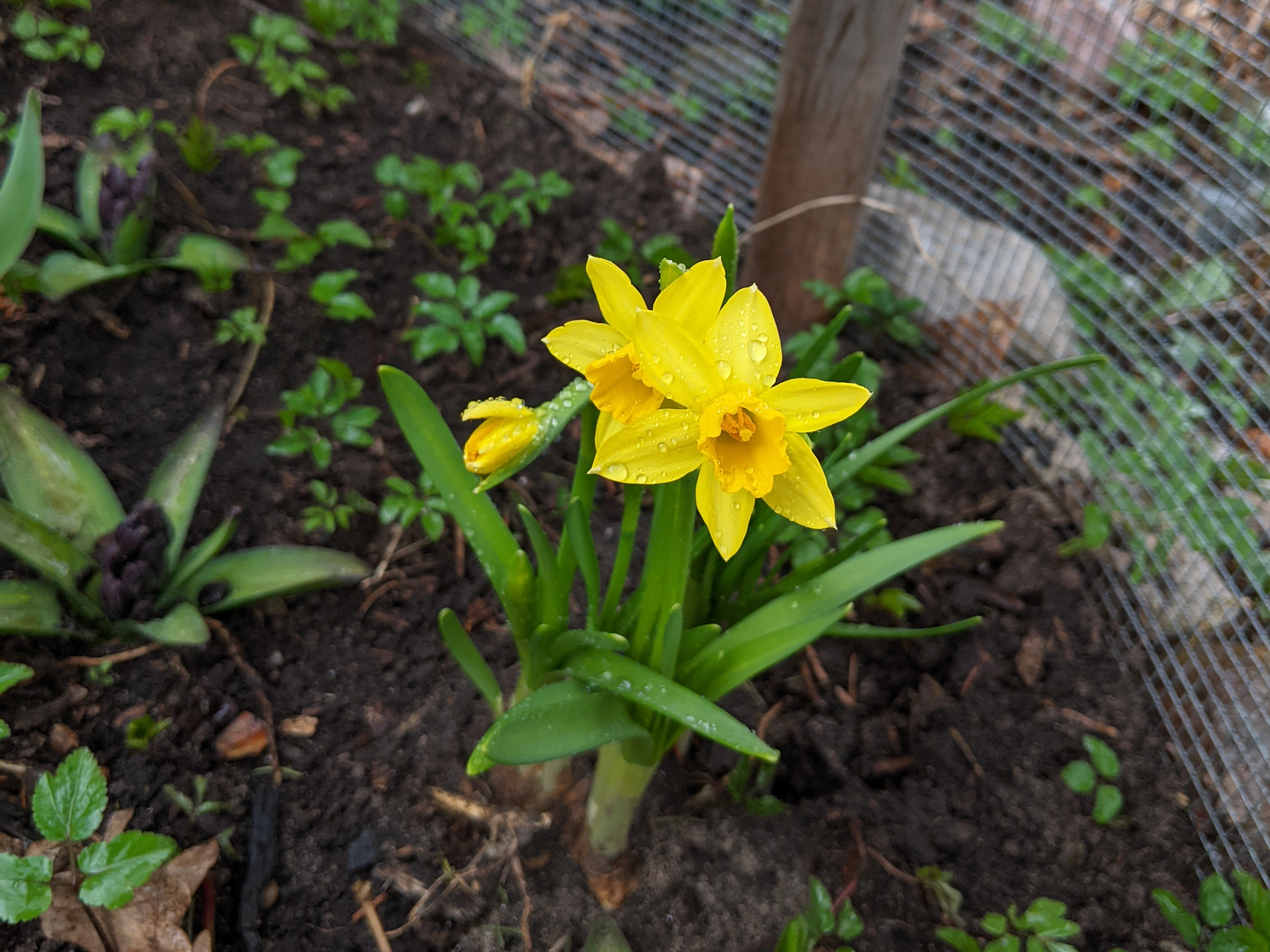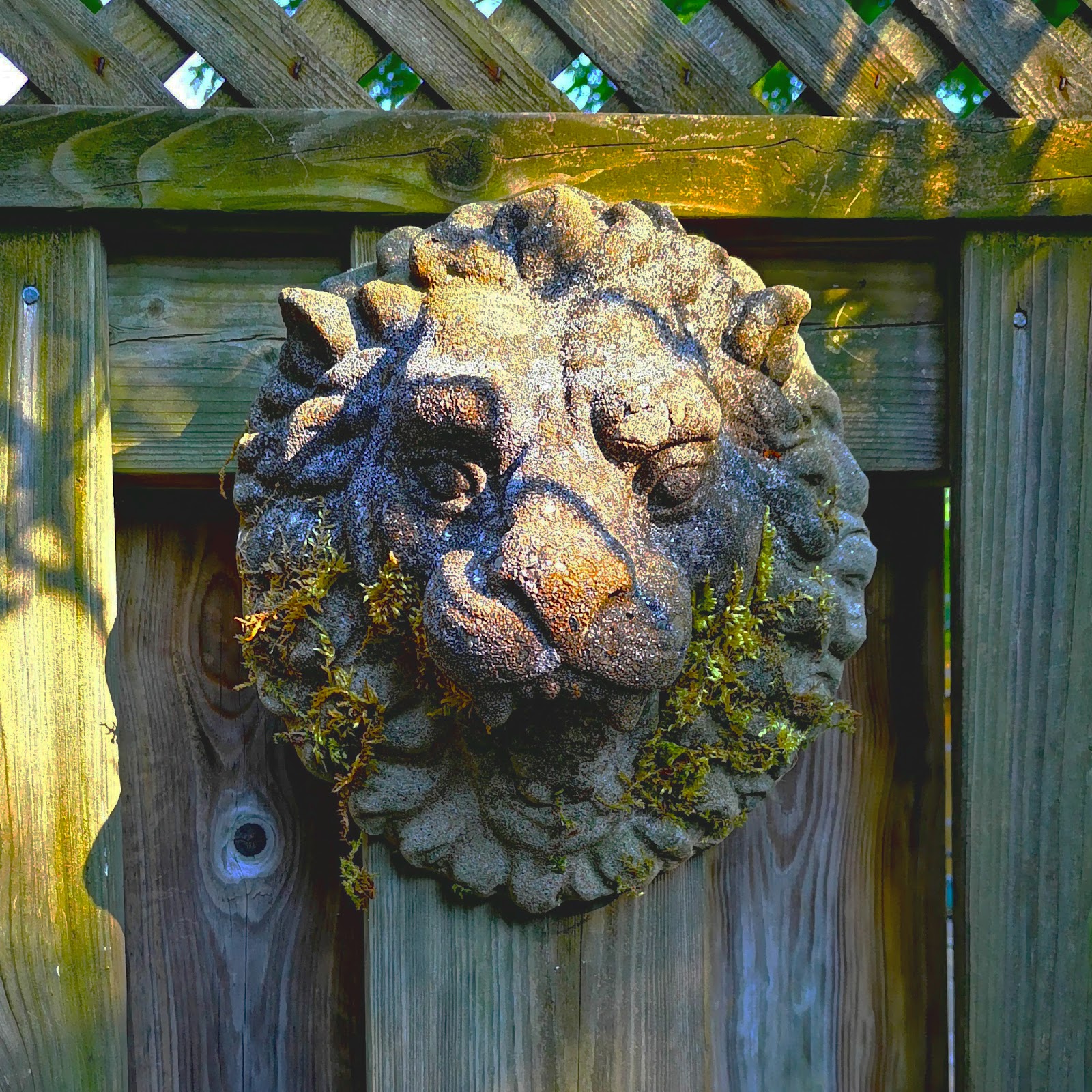A Book About Garden Art
My husband must think I'm curating my own little library with the number of books I've ordered or purchased second hand within the last few weeks. I tend to have a lot of spare time when the summer starts up, not for any reason related to summer scheduling, though. I'm a disabled woman who mostly keeps the house while her husband works so my free time is as ample as I allow it to be. The reason I find myself with more time on my hands is exclusively because of how hot it gets. If it's too humid all my house reno work grinds to a halt. We're in the midst of painting, the basement is too humid to paint right now, plus the AC kicks up a lot of cat hair. As such I have some free time on my hands, and today is unbearably hot. There is nothing else I'd rather be doing when it's too hot to go outside than hole up indoors reading a book in the cool embrace of air conditioning. Unlike lazing around watching TV, reading feels more rewarding and like I've actually accomplished something. I read all kinds of different books, some fictional novels, and sometimes non-fictional instructional or inspirational books, like the one I'm reviewing today, Creating Garden Accents by Jerri Farris and Tim Himsel (published in 2002).
I own several other books by Farris and Himsel, I didn't even know until recently! They paired up with Black and Decker to produce a handful of home improvement books. Most of their books revolve around the garden or patios, decks and fences and sometimes home decor. And that's how I found out about Creating Garden Accents, it was suggested in the back catalogue of another Farris and Himsel book. I have personally found garden art to be one of the hardest subjects to get information on. Pinterest used to be a good resource, maybe back in 2010 when it was bustling with users and creativity abounded, but when I try to use it now I often get the same pins recycled in my feed over and over again. I thought perhaps a community of garden artists might exist somewhere online but I've yet to find it. Instead I'm blazing the path, hoping someone will find me here and we can share ideas and inspire one another. And that's why I bought this book, so I could have someone else's creativity ignite my own and maybe make some cool new garden décor.

This book is not short on ideas, there are twenty-two step by step projects inside, all in colour photographs. Not every step is shown in photographs, some are written only, and some of the final projects are merely illustrated. I suspect they had difficulty photographing the rabbit trellis or the turtle ornament, or maybe they just wanted to include their artistic drawings which in themselves are well executed. I didn't get a preview of what would be in the book before buying, but there are several of the projects included on the front and back cover. Namely the bench, the chandelier, the bird bath and the rabbit trellis. It was enough to spark my interest and I thought I'd take a chance and find out what other goodies awaited me in the pages of this now vintage book.
First, let's talk difficulty level. There is no specific skill set required to make garden art, each piece is a reflection of the artist, art is subjective and artistic mediums vary substantially! You may recycle plastic, or weld junk metal together, or glue glass beads into your fence. The only rule is there are no rules! I'm a visual art grad so I have experience meddling with most mediums, but even I felt some of the projects in this book bordered on the more difficult side. I'd say an easy garden project might be something like the homemade bird feeders we made in elementary school, where you smear peanut butter on a pinecone and dunk it in seeds (I don't recommend doing this as I've since learned it is bad for the birds). If it requires few materials and it's not complicated to make then I'd call it "easy". If it requires some degree of knowledge in tools and materials and takes more than two hours to put together I'd classify it as "medium" difficulty. If it's more niche, requires buying a specific tool that's not already in my collection and takes a variety of materials or the materials are expensive then I classify it as "hard" difficulty. This book skirts between medium and hard difficulty, and I would not recommend it for beginners. If you've never touched a power tool before, this book probably isn't for you.

That being said, the projects are plentiful and interesting. Some notable ones are pictured here in my post. I like the carved stone, the upcycled "door spring bug", the yin-yang fountain, and the copper sprinkler. They are all things I hope to try in the future. There are a few wood working projects for benches, a swing, and a decorative bird house, too, but I'm not much into wood work. Then there are all of the copper projects; candelabras, a miniature bed frame, a gate, a weather vane, and a trellis (they call it a bean cage). If you have the opportunity to read more of Farris and Himsel's books you will quickly realize their obsession with copper. And I mean obsession. Copper projects make up almost half of the projects in this book, and while I find copper whimsical and beautiful to look at, I don't imagine it's altogether easy to work with or even affordable at this point. Copper might have been fairly cheap back in 2002, but I priced out the copper chandelier - not including the cost for all the tools that I don't yet have - and it came up to $200 CAD. In fact one of the listed supplies was only a guess on my part because they no longer carry whatever it is the book is referring to (that's not too surprising given that US hardware stores carry significantly more than our Canadian counterparts, so it's probably a specialty item in these parts).

The cost of the copper isn't the only prohibitive aspect, the copper and several other projects in the book use a blow torch! I've never touched one before, even if it was a small torch I really don't have the set up for it. I read in another book that they advise you use a sheet of galvanized metal as a kind of work bench to protect your space from catching on fire. Well, I don't have a work room or a garage so I guess I'm SOL. I'd really love to try the copper sprinkler, it's something I've always wanted, but I'm not sure I could even find the supplies or the space to make it in! It really makes me wish that my city had a creative hub center where I could rent tools and workspace by the hour. Oh well!
I recommend this book if you like more challenging projects that have a real wow factor, but I do wish they had sectioned it off and included more beginner friendly items and didn't go all in on the copper. There are certainly many exquisite looking pieces that I'd love to own but couldn't possibly afford to make! Still, I do feel inspired to maybe find my own way of making something special with a little bit of copper, sans blow torch.






































